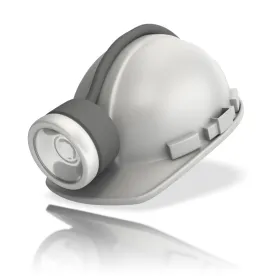On April 29, 2015, the Supreme Court unanimously held that courts may review whether the United States Equal Employment Opportunity Commission (EEOC) has fulfilled its statutory duty to conciliate discrimination allegations. However, the power to review is narrow. A court may act as a factfinder only when presented with concrete evidence that the EEOC: (1) did not provide sufficient information about a charge, or (2) did not attempt to engage in a discussion about conciliating the claim.
Limited Communications Between EEOC and Employer Lead to Allegation That Conciliation Process Failed
This case arose after the EEOC investigated a sex discrimination charge at Mach Mining, LLC. After the EEOC issued a “reasonable cause” determination that unlawful discrimination could have taken place at Mach Mining, it issued a letter inviting the parties to engage in an informal conciliation process. The letter stated that a representative would contact Mach Mining to begin the process. Mach Mining apparently did not hear anything until a year later, when the EEOC issued a determination that conciliation efforts had failed.
The EEOC then sued the company in federal court. Mach Mining responded that the EEOC had not made a good faith effort to conciliate. The EEOC countered that: (1) the process was not subject to judicial review, and (2) the two letters were sufficient to fulfill the organization’s statutory duty to conciliate. The United States District Court for the Southern District of Illinois agreed with Mach Mining, holding that the EEOC conciliation process was subject to judicial review but granted the EEOC an immediate appeal. The Seventh Circuit Court of Appeals reversed, holding that courts could not review the EEOC’s conciliation processes because Title VII of the Civil Rights Act of 1964 (Title VII) provided no standards by which to review the conciliation process. Rather, Title VII left it solely to the EEOC’s “expert judgment”. The Supreme Court granted certiorari to address the question and to resolve the circuit split created by the Seventh Circuit’s decision.
Court Concludes Conciliation is Subject to Judicial Review, Adopts Limited Standard of Review
The Court first noted that Title VII created an expansive procedure for assessing and resolving discrimination claims. The Act also sets forth various requirements for the EEOC, the administrative agency charged with enforcing Title VII. The requirement at issue in this case is that of conciliation, which mandates that the EEOC engage in informal discussions with the employer after a finding of “reasonable cause”. Title VII grants significant discretion to the EEOC in determining whether the conciliation process has been successful, stating broadly that the EEOC may file suit if it “has been unable to secure from the respondent a conciliation agreement acceptable to the Commission itself.” Additionally, the Act required the parties to keep the conciliation discussions confidential: “Nothing said or done during and as part of such informal endeavors” may be publicized by the EEOC or “used as evidence in a subsequent proceeding without the written consent of the parties concerned.”
The EEOC argued that this language requiring confidentiality prohibited courts from reviewing whether it had engaged in the conciliation process. It asserted that reviewing the conciliation process would require the parties to divulge confidential information obtained during the discussions, which contradicted the terms of Title VII.
The Court first noted that, absent express statutory language, there is a strong presumption to allow for judicial review of administrative actions. Moreover, the Court continued, Title VII made conciliation a mandatory prerequisite to filing a lawsuit, and required at a minimum that the EEOC tell the employer about the claims and provide an opportunity for voluntary compliance. The Court compared this language to the requirement that a plaintiff exhaust administrative remedies before filing a suit and noted that if the EEOC did not conciliate, then it had not satisfied its statutory prerequisite. Nothing in Title VII, the Court concluded, prevented the judiciary from reviewing whether this requirement had been satisfied. Thus, courts are permitted to review whether the EEOC engaged in conciliation.
The Court then determined the proper standard of review. The EEOC argued that review in this case should have been limited to the facial validity of the two letters it sent to Mach Mining. Mach Mining argued that the review process should be much more detailed. It proposed that the high Court adopt the comprehensive standard set forth in the National Labor Relations Act (NLRA), and allow judicial review to determine whether the agency had negotiated in “good faith” over a discrimination claim.
The Court rejected both arguments, concluding that the EEOC’s standard essentially provided no judicial review, and that Mach Mining’s standard was too rigid given the expansive discretion Title VII granted the EEOC. Rather, the Court concluded, judicial review should be limited to determining whether the EEOC had: (1) informed the employer about the allegations, and (2) tried to discuss, either orally or in writing, the allegations of discrimination with the employer. It concluded that a sworn statement from the EEOC that it had performed those obligations would probably suffice to establish that it had met its statutory conciliation obligations. Thus, although the EEOC conciliation process is subject to judicial review, it is reviewable only to determine if the EEOC engaged in the process at all. The Court then remanded the case so that the district court could determine whether the EEOC had failed to engage in the conciliation process.



 />i
/>i

